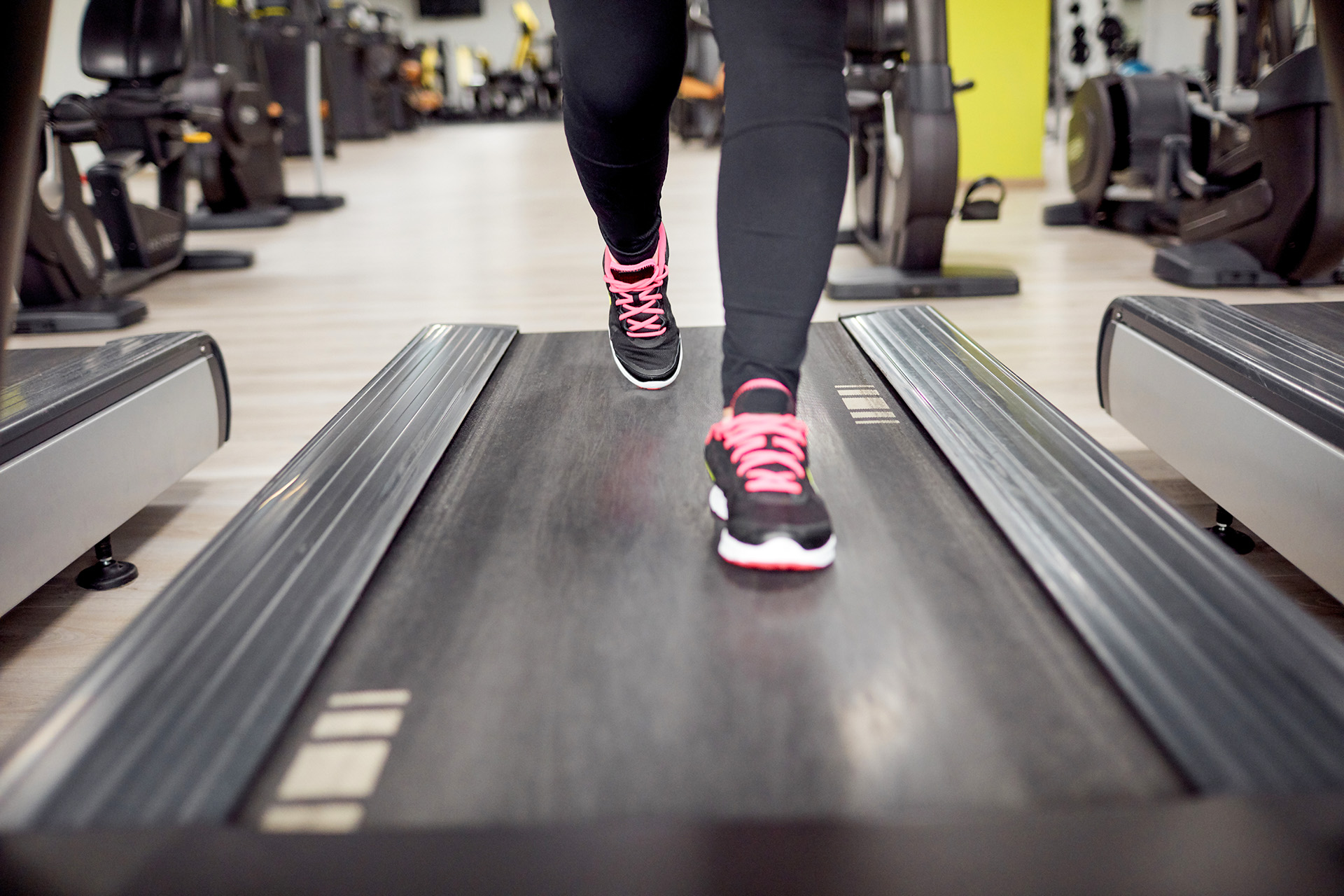Fitness
Even 5 extra minutes of exercise every day can save you from high blood pressure, finds study

Our busy lifestyles often restrict us from adopting healthy changes and becoming more active. Today, finding time to exercise is a struggle for many. However, pushing physical activity to the side can affect your heart health. According to a new study, including five additional minutes of exercise in your daily routine could significantly lower your blood pressure.
(Also Read | Woman who weighed 83 kg shares her full diet plan which helped her lose 16 kg)
The study was published in the journal Circulation. Researchers from the University of Sydney and University College London analysed data from over 14,000 volunteers across five countries who wore devices on their thighs over a seven-day period, capturing 24-hour movement behaviours across six different types: sleep, sedentary activity, standing, slow walking, fast walking, and exercise-like activities (like running or cycling).

Small amount of daily exercise improves heart health?
The study discovered that simple activities like stair-climbing, brisk walking, jogging, cycling, or even power-walking uphill can greatly impact cardiovascular health. They found that the key was replacing sedentary behaviour like sitting, lounging, or inactivity with just 20 to 27 minutes of exercise daily. The researchers estimate that this small amount of movement could reduce your risk of cardiovascular disease by up to 28 per cent.
Professor Emmanuel Stamatakis, director of the ProPASS Consortium, which conducted the study, explained in a press release, “High blood pressure is one of the biggest health issues globally, but unlike some major causes of cardiovascular mortality, there may be relatively accessible ways to tackle the problem in addition to medication.”
Author Dr Jo Blodgett from UCL added, “Our findings suggest that, for most people, exercise is key to reducing blood pressure, rather than less strenuous forms of movement such as walking. The good news is that whatever your physical ability, it doesn’t take long to have a positive effect on blood pressure…What’s unique about our exercise variable is that it includes all exercise-like activities, from running for a bus or a short cycling errand, many of which can be integrated into daily routines.”
Additionally, the study found that sedentary time was notably linked to higher BP, while standing and walking didn’t significantly impact BP, stressing the strong BP benefits of more vigorous activity.

Fitness
A Few Hours Of Walking Every Week Could Slash Your Risk Of An Early Death, New Study Suggests

A good workout can help you build muscle, get a better night’s sleep, and feel really good. But it might even help you live longer, a new study found.
You don’t even need to do anything drastic to reap the benefits. Here’s what researchers found, plus how to ramp up your own exercise routine to get the perks.
Meet the experts: Ryan Glatt, CPT, is a senior brain health coach and director of the FitBrain Program at Pacific Neuroscience Institute in Santa Monica, California. Albert Matheny, RD, CSCS, is a personal trainer and co-founder of SoHo Strength Lab.
Fitness
Say Goodbye To Belly Fat With These Celebrity Fitness Instructor-Recommended Abs Workout

Reducing belly fat around the abdomen is a common weight-loss goal shared among people worldwide. Even after working very hard on your fitness, losing belly fat in particular can feel impossible at times. In her recent Instagram video, fitness instructor Yasmin Karachiwala showed a few efficient ab workouts for beginners as well as advanced fitness enthusiasts. Sharing the video, she wrote, “Let’s burn that belly fat. Abs workout for all levels—3 sets x 15 reps. Ready? Let’s do this!” In the shared video, Yasmin suggested 3 abs workouts for beginners including curl up legs down, reverse curls and crisscross. Next up, she demonstrated a bunch of exercises for people with intermediate-level fitness and lastly shared a workout routine for advanced level. Check out the full video here:
In her previous post, Yasmin Karachiwala shared a video of her using Theraband for doing on-the-go exercises. She said, “Today I want to share with you that one thing that I don’t travel without – the theraband. I love travelling with this because A. It is so light. B. It becomes so tiny that it can fit anywhere in your travel bag and C. It enhances resistance, which increases your strength, builds flexibility and also tones your body. Let me show you some exercises that you can do when you are on the go or at home.”
Yasmin followed it by showcasing clips of her performing different exercises with a theraband which includes workout routines for shoulder, chest, bicep, abs, leg and more.
In the caption, she wrote, “Introducing you to my favourite travel buddy—Theraband. Follow my full body workout and practice 15 reps and 3 sets for each exercise. Try them out and let me know your progress.”
Without further ado, follow Yasmin Karachiwala’s workout recommendations and get going on your fitness journey.
Disclaimer: This content including advice provides generic information only. It is in no way a substitute for a qualified medical opinion. Always consult a specialist or your own doctor for more information. NDTV does not claim responsibility for this information.
Fitness
Is the 12-3-30 workout better than walking 10,000 steps? I tried both to find out

“Walking is the best form of exercise you can do,” says Dr Elroy Aguiar, an assistant professor of exercise science at The University of Alabama.
“It’s easily accessible, with a low barrier to entry in terms of cost, equipment and skill requirements. The vast majority of the population can easily get outside and go for a walk; that’s why we say walking is the best recommendation for exercise.”
But, as with anything simple and successful, the internet has found a way to complicate it. Enter the 12-3-30 method – walking on a treadmill with its incline set to 12, at 3mph, for 30 minutes.

Influencer Lauren Giraldo brought the method into the mainstream, claiming it helped her lose 30lb (just over 13.5kg). Now this “cardio hack” has racked up millions of views on Tiktok, with top videos promising rapid weight loss and a “toned” physique.
As a fitness writer who’s ever-sceptical of anything that sounds too good to be true, I decided to give it a go for myself, and see how it compared to simply walking 10,000 steps a day sans-treadmill – which is something I’ve enjoyed doing for years with no complaints.
How to do the 12-3-30 workout
If you want to try the 12-3-30 trend, all you need is a treadmill and a spare 30 minutes. Set the treadmill’s incline to 12, bump the speed up to 3mph (or 4.8kph if, like me, your treadmill of choice only operates in the metric system) then walk for 30 minutes. You can do this in the gym, or using your treadmill at home.
My thoughts on the 12-3-30 workout
There’s logic behind the 12-3-30 workout. The treadmill offers a more controlled environment than a regular walk, so you can dictate variables like the gradient and pace.
“What you’re doing by increasing the incline is increasing the intensity of the activity,” Dr Aguiar explains. “Incline walking is much more difficult, so it’s going to increase oxygen cost, heart rate and energy expenditure.”
This can improve your cardiovascular fitness. Paired with an appropriate diet, it can also aid weight loss, increasing energy expenditure to create a calorie deficit. But there’s no magic formula to it, you’re just moving more, and some Tiktok videos may overstate its effectiveness on the fat loss front – consistency and time are the real secret ingredients if this is your goal.
Trying the 12-3-30 workout for myself, I wound up far sweatier than I expected; I was essentially walking up a fairly steep hill for 30 minutes. The time went fairly quickly, and compared to a run it didn’t take nearly as much preparation or motivation to get started. These are all plus-points, supporting its reputation as a “cardio hack”. However, I still took umbrage with some elements.
Firstly, I found it a bit boring. I was facing a blank gym wall for the full half hour and, although I roped a friend in to join me for a chat, I’d still rather head to an actual hill for a more stimulating walk.
It also doesn’t include any sort of progression. The workout will keep burning calories, sure, but if you want to see continued improvements in your fitness then you need to gradually make your training more challenging over time by upping various variables – in the case of a treadmill, the main ones are speed, gradient and time.
My other main qualm is that this workout keeps you cooped up inside. As someone who works from home most days, I’d rather use this time to head outdoors and reap the many benefits of doing so.
“Ideally, it’s good to get outside because there are other benefits – interacting with your environment, sun exposure, those sorts of things,” Dr Aguiar tells me.
Read more: I walked 10,000 steps with a weighted backpack every day for a week – here are five reasons I’m not stopping
My thoughts on walking 10,000 steps a day
Walking 10,000 steps per day has become a popular fitness goal thanks to fitness trackers making it their default target. But the figure really stems from a 1960s Japanese pedometer called the Manpo-Kei or “10,000 steps metre”. In other words, it’s rooted in marketing, not science.
The actual amount you need to walk each day to see most health benefits is more like 8,000 steps, studies have shown. However, I’ve found walking 10,000 steps a day works for me, and I’ve been doing it for years.

Getting on my feet and out of the house boosts my mood and helps my body feel looser after a day at my desk. I can squeeze extra steps in throughout the day with a lunchtime wander or stroll to the shops, and I enjoy it, often exploring new places or meeting friends for an on-the-go catch-up. For me, an ever-changing natural environment is far more engaging than a blank gym wall too.
Research supports my feel-good theory, with a study published in the Scientific Reports journal finding that spending at least 120 minutes per week in nature is “associated with good health and wellbeing”.
But there are some drawbacks to this practice too. Without a treadmill belt forcing you to walk fairly fast, it’s easy to let your pace drop while out for a walk. And Dr Aguiar’s research suggests that walking speed could be linked to the health benefits on offer from getting your steps in.
“The recommendation from our studies has shown that, if you walk at a cadence of about 100 steps per minute, that’s equivalent to what’s called ‘moderate intensity’,” he explains. “All of the research in this area suggests that most of the benefits accumulate at a moderate or higher intensity.”
Read more: You only need three moves and one dumbbell for the best abs workout at home, according to a top trainer
The verdict: 12-3-30 workout vs 10,000 steps a day
Both the 12-3-30 workout and walking 10,000 steps a day have pros and cons. However, the mental and physical benefits of both far outweigh any drawbacks.
Personally, I found walking 10,000 steps a day was the better option by far, leaving me feeling far better than spending 30 minutes staring at a treadmill screen. However, there will be people out there who prefer the structure and tangibility of the 12-3-30 method.
Which brings us to the deciding factors: enjoyment and accessibility. Which one are you able to do regularly, and which one is fun enough to keep you coming back for more?
“I’m not going to dissuade anyone from doing any sort of exercise,” Dr Aguiar says. “Whether people choose to exercise inside on a treadmill or outside by walking around a park, there are benefits to both. And if people are enjoying doing the 12-3-30 trend, good on them.”
In short, adding some extra movement into your routine is rarely a bad thing. If you find something that works for you then it’s well worth sticking with it, rather than flitting between the ever-flowing stream of fitness fads that dominates social media.
As Giraldo says in her initial video on the topic: “I used to be so intimidated by the gym and it wasn’t motivating. But now I go and do this one thing and I can feel good about myself… I look forward to it, it’s my me-time.”
Read more: Adam Peaty reveals the training and mindset shift that got him to Paris 2024 – and what he plans to do next
-

 News6 days ago
News6 days agoHamas releases four female Israeli soldiers as 200 Palestinians set free
-

 Business1 week ago
Business1 week agoInstagram and Facebook Blocked and Hid Abortion Pill Providers’ Posts
-

 Politics1 week ago
Politics1 week agoOklahoma Sen Mullin confident Hegseth will be confirmed, predicts who Democrats will try to sink next
-

 Culture4 days ago
Culture4 days agoHow Unrivaled became the WNBA free agency hub of all chatter, gossip and deal-making
-

 Nebraska7 days ago
Nebraska7 days ago3 years of the Nebraska Examiner: Looking back for inspiration and ahead to growth, with your help • Nebraska Examiner
-

 World6 days ago
World6 days agoIsrael Frees 200 Palestinian Prisoners in Second Cease-Fire Exchange
-

 Technology2 days ago
Technology2 days agoMark Zuckerberg says Meta isn’t worried about DeepSeek
-

 Business2 days ago
Business2 days agoTulsi Gabbard Defended Russia and Syria. Now She Must Defend Those Views.



















